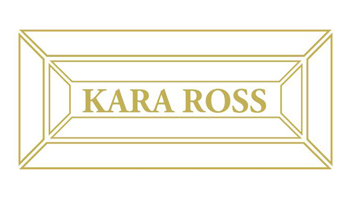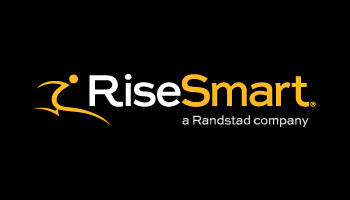
https://tinyurl.com/beaherogroup
- Need help landing a client?
- Want to network with local marketers/businesses?
- Need some inspiration?
Join our Facebook group! It’s completely free and we’re always sharing info that’s helpful. 🙂 No pressure to sign up on our website or purchase products!


We all want feedback on our products, ourselves, our business, our day to day lives, our choices, etc. We want those around us to tell us that we’re doing a good job and that they love what we’re offering! Or we want them to say things like, “good job sticking to your diet and exercise plan! I can see a big difference!” It’s helpful and it feels good.
But what about negative feedback?
“It doesn’t look like you’re dropping as much weight as you wanted from your diet and exercise plan. Have you thought about changing it up?”
Or….
“Yeah, your products are great but I wish you offered a bigger selection.”
While it might hurt your feelings at first glance or knock you down a few rungs, this kind of information can be insanely helpful.

Take yourself and your emotions out of the equation. I know that can be difficult to do (take it from someone who is extremely sensitive to criticism), but you’ll be rewarded for doing so.
Let’s look back at this example:
“Yeah, your products are great but I wish you offered a bigger selection.”
“Your products are great”, that’s good feedback! You’re doing good work. BUT this person isn’t buying from you because you don’t have a big enough selection. Rather than getting caught up on the fact that you didn’t land a buyer, focus on the fact that they gave you information on how to improve your business and rope them in. A bigger selection would encourage them to buy from you. You can use this information to not only expand what your store has to offer, but you can also use it as a possible motivation for why others haven’t bought from you. You know, the nameless entities that peruse your website but don’t buy or say anything. They just ghost you. Perhaps they too want a bigger selection.
And if you look at these kind of reviews from an unbiased standpoint, you’ll find that they’re actually far more helpful than positive reviews.
“I loved the content that you wrote for me! It was exactly what I was after. I highly recommend this freelance writer for any and all of your content needs!”
Man, that compliment feels good right? I’m beaming just remembering the fact that someone left that for me. But at the end of the day, it’s not really that helpful. Sure, you’re doing a good job but there’s always room to improve.
“Good writer, but she’s kind of stiff. The content she wrote felt more like academic prose than something light-hearted and attractive.”
This is another review I’ve gotten. At first it kind of stung. As I said, I’m a sensitive person! But when I actually looked back at it, I was able to pull some valuable insights from it. My writing was stiff and wasn’t really that engaging. It worked for the first person just fine, but this client wasn’t completely satisfied. It taught me to ask my clients what style they want from me and also encouraged me to “loosen up” my writing.
Prospecting Gems from Negative Feedback

What I’m talking about here isn’t the constructive criticism I mentioned above. What I’m referring to is straight up negative feedback. The kind where the person isn’t, well, kind. You know the type:
“I might choose your agency to market my business if your agency was better. You guys all seem to be lazy and uninspiring. Your website is pretty bland too. Why would I want my business to be marketed by an agency that’s so lackluster? Seriously, 0/10.”
Yikes and ouch. A word to the wise though: there are plenty of gems hidden in that message. Even though this person was rather rude in their post, you can gather some valuable insights:
- Your website could benefit from a redesign
- Your email/contact team needs to stop being so rigid
- You need to reformat how you’re approaching potential clients
- You’re playing it “too safe” you need to step up your game
Sure you really have to dig for these gems sometimes, but for the most part they exist in these kinds of reviews. While there are better ways of going about things, this person did succeed in telling you what needs to be fixed/changed/updated in order to attract more business. Could they have done it without the insults? Yeah, probably. But the point of the matter is you now have some valuable information to use to your advantage.
Handling Negative Feedback that Isn’t Helpful

Okay, but what about the feedback that is just plain rude and not helpful?
“Worst marketing agency I’ve encountered. If you’re thinking about working with them, run! Run as far and as fast as you can in the opposite direction. These guys clearly got their marketing skills from a Cracker Jack Box.”
Well then, that’s not very helpful is it? Obviously they didn’t like your agency; they made that abundantly clear.
So how do you deal with this? Well, there are a few ways:
Ask for an Explanation

For these types of reviews, I always suggest asking the author to expand a little bit:
“I’m sorry we didn’t meet your standards! Can you please elaborate on what you didn’t like about us? Do you have any suggestions on how to improve our agency? Thanks!”
Not only does this look good on your business from the eyes of potential clients who also see the review, but it will also show OP that you do give a shit about your clients and business. Plus, you might be able to pull out some gems if they’re willing to play ball:
“The people I spoke to didn’t seem to have a clue about anything! Your company claims to have been in business for 10 years, but the person I spoke to didn’t seem to understand anything I was saying. He/she had NO idea what I wanted done and they were really lost and confused during the entire process.”
Well, now you have a starting point. Whoever is speaking to clients is coming off like a newbie or perhaps they’re “stiff”. Now, you can work on improving this.
Offer Incentives

This is one I hesitate to post, especially for new businesses. A lot of people have learned that if they act rude or say awful things about a business, they’ll get rewarded for this behavior. Think of the lady who screamed at the fast food worker over not getting enough sauce or whatever. The manager likely scrambled over, chastised the employee, and offered the woman a substantial discount or something free… Over something trivial.
However, if you think this customer is worth reaching out to, you can always try to incentivize them to come back:
“I’m very sorry you had a bad experience with our business! We would like to offer you a 10% discount on our services should you decide to give us another chance. This offer will be good for the next 3 weeks so take your time!”
Whatever you do, DON’T post this where the public can see it. You’re just asking for the freeloaders of the world to come post negative content so they can get a discount.
Apologize and Move On

This might also be a tactic you switch to if they respond to your request for an explanation with more rude insults. Sometimes you’re just not going to get info out of people and they take a joy in being rude to others. In this case, just cut your losses. Post an apology then move on. Don’t dwell on the negativity; you can please everyone and as I said, some people are just mean for the sake of being mean.
“I’m very sorry that you had a negative experience with our business! This is certainly not how try to conduct ourselves or our agency.”
If they keep up their gripes after the apology and continue to post negativity, ignore it. And if you can, have it removed. Almost every platform will allow you to take down negative feedback that isn’t helpful. If they continue to “shit post” after you’ve apologized, your website shouldn’t have any problem removing the rest of the reviews.
Keep in mind that you can’t please everyone & that some people are just bitter and rude.
You’re not going to make 100% of people happy 100% of the time. Negative feedback doesn’t necessarily mean there’s anything wrong with you, your brand, or your business; it just didn’t strike that person’s fancy. Some people like chocolate, others prefer vanilla. Perhaps your business is the vanilla in this situation.
This isn’t to say that you shouldn’t collect insights where you can and use them to your advantage… But keep in mind that even if you’ve addressed the issues in the feedback and the person is still unhappy, chances are it’s not you. It’s them.

There are many things that a successful enterprise or individual needs in order to make a success of their endeavors. You need a good idea that appeals to an existing consumer base. You need the money to make it happen. You need the right people working with you. You need good marketing, good product development, and you occasionally need to get lucky. But if there is one thing that a success story cannot exist without it is motivation.
Looking at the list of needs above, we know that you can drop almost any one of them as long as some of the others are still there. But if you remove motivation, then the whole thing falls apart. Motivation is what will make or break your efforts. Now, nobody starts off with no motivation, but we all know that the difficulties that lay in our path often demotivate us. We’ve all hit those points in our lives where we just think, “Screw it”, or “I can’t do this anymore”. We also know that every time we’ve gritted our teeth and persevered, we came out the other side a more confident and capable person.
So, that’s the realproblem. It’s not finding the motivation to start off, but finding ways of keeping ourselves motivated even when times are tough.
Keep Calm and Carry On

The expression “Keep Calm and Carry On” is not just the cover of that small book we see in bookshops. This actually started off as a British government slogan in 1939, when the United Kingdom stood alone against a Nazi-dominated European continent.
The context was the foreknowledge that, sooner or later, the Battle of Britain was going to begin; when the German Luftwaffe and British Royal Air Force would clash in the skies above England. The Brits knew hard times lay ahead; after all, Churchill had promised them nothing but “blood, toil, tears, and sweat”. Facing down a challenge requires us to steel ourselves in advance. Don’t wait for hardship to come along and then react to it, but mentally brace yourselffor an impact that is inevitable.
This is a stark, and even grim historical reminder of how motivation can lead to success. Had the Brits not persevered and defeated the Germans in the skies, they may not have been able to hold out long enough for the United States to join them and start the long march to Berlin.
And speaking of America and American qualities, there are two sides to perseverance. On the one hand you have stoic perseverance, and on the other you need that can-do attitudethat sees you through to the end. Hope was kindled once the Nazis lost to the Royal Air Force and America joined the war. A can-do attitudetook over with the mantra that, “the way home leads through Berlin”. The Allies, whether American, British, Canadian, Australian, and all the rest knew that only by seeing through their task to the end could they see their efforts come to fruition.
We are the inheritors of their legacy. We continue to enjoy the freedom that was so hard-won all those years ago. And if our predecessors could endure that and come out at the end the better for it, then we can too.
Be Yourself, with Your Own Standards
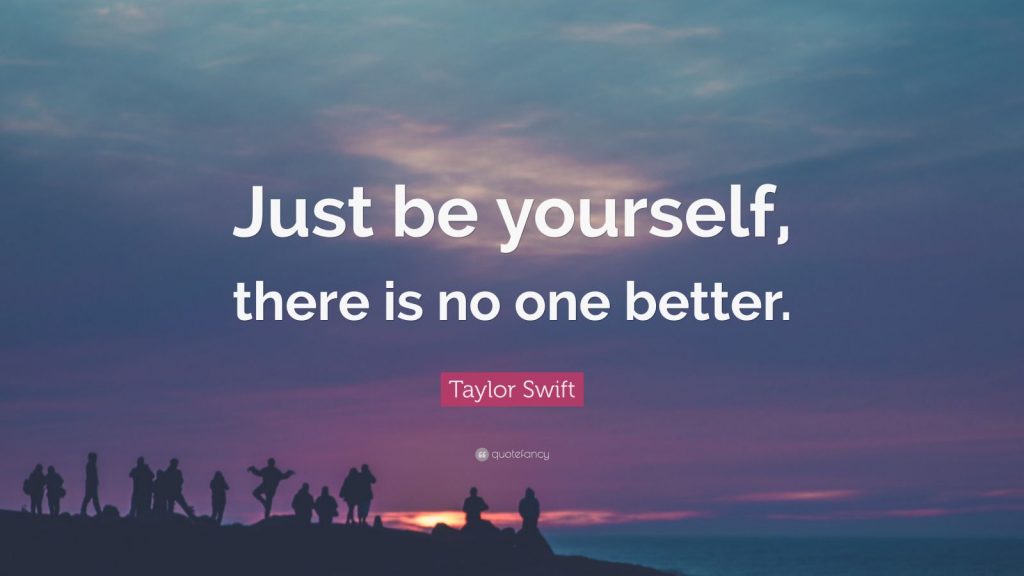
We all know that it really is basic human nature to compare ourselves to others. Does my neighbor have a nicer car? Does my coworker have higher pay? Did that one student at college always beat my scores?
This leads on to thinking, “What could I have done differently?” and, “Am I going to get it wrong again next time?”
Experience teaches us that this sort of thinking gets us nowhere. I might be a safe bet to say that anyone looking for genuine success in life, especially when it comes to the world of business and enterprise, is competitiveby nature. After all, that’s the name of the game. And, assuming you have that can-do attitude, you’ll always be looking ahead. The trouble is that looking ahead often causes us to see people who are aheadof us on that same path. If we dwell on that for too long, our can-do attitude is just going to sink.
Constantly comparing yourself to others won’t help, because you will usually only notice the things where they excel and you don’t, even though they may well look at you the same way but for different reasons. So, in the words of Judy Garland:
“Always be a first-rate version of yourself, instead of a second-rate version of somebody else.”
Stop Living in the Past
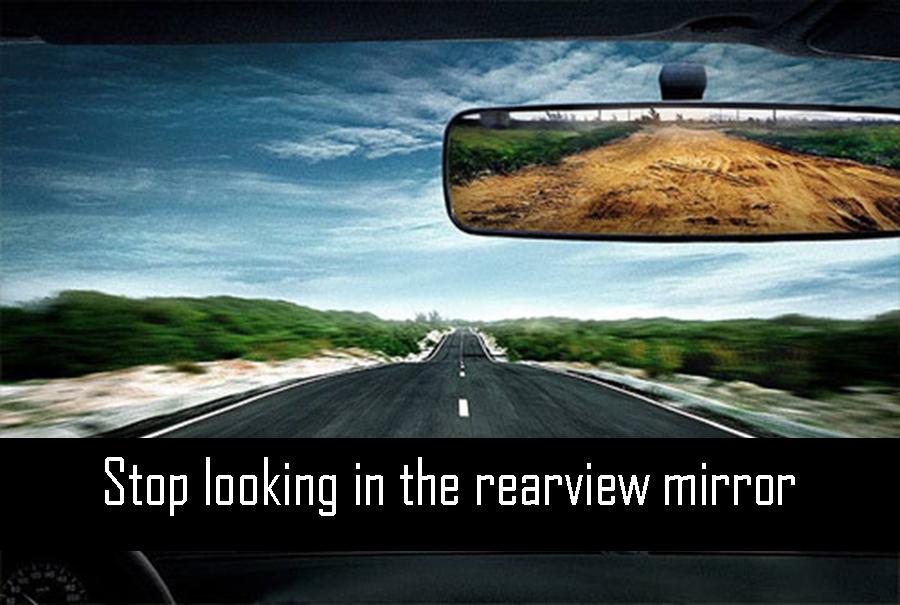
Now we know that the focus should be on ourselves, but there is more to it than that. For some of us, we might find it easier to ignore the people around us but still be totally consumed by thoughts of our past mistakesand future challenges.
In many ways this can be even more debilitating when it comes to staying motivated. When we look at others, we can always console ourselves that there are as many (if not more) people who are less successful than we are. We can likewise convince ourselves that it is only a matter of time and effort before we start overtaking those who are ahead of us (which is, of course, totally the right attitude to have). But when it comes to our own past and what lies ahead of us, we cannot change the former and cannot predict the latter.
It is inevitable, therefore, that we must remind ourselves of that age-old saying, made famous by President Kennedy, that “the only thing we have to fear is fear itself”. Staying focused, present, and in the momentwill ensure we have fewer regrets to look back upon in the future, which automatically makes the future a brighter prospect. The past is there as a lesson, and the future is there as an opportunity to do better. This is as far as our concerns with either past or present should go. Learn from the past, plan for the worst, hope for the best, but never let it get in the way of the present. If we can balance that properly, we can do anything.
Time to Get Organized

Since we so conveniently got ourselves onto the topic of “the present”, there are quite a few things we can do right nowthat will alleviate our justifiable concerns. We briefly touched upon planning for the worst, and there is no better way to do that than being organized.
If you haven’t already, a great and often underrated way of getting things in order is to write up a to-do list. It almost sounds cheesy, but it can work wonders for your motivation. Given that we are so often unaware of the many achievements and progresses we make daily, writing up a to-do list and ticking off the itemson it one at a time will really give us a sense of achievement. For the forgetful and less organized among us (guilty as charged, here) it also serves a very practical purpose as well. You can even break it up into short term to-do lists, medium-term milestones, and long-term goals.
Perhaps most importantly, never leave a day emptyon your to-do list. Doing something, anything, at least once a day is a step forward and will prevent you from climbing into bed at the end of the day feeling like you’ve been a total waste of oxygen (not an unfamiliar feeling for some of us, *ahem*).
But if we look at the other end of the spectrum, so to speak, there are those among us who completely overworkand who feel there is always one thing left undone and cannot take a break. If you’re constantly on your feet, running around trying to juggle everything and stressing yourself out, then its about time to learn to take a breakevery once in a while. If you have a tendency to work late, whether because you’re stressing yourself out during the day or because you are naturally more of an “owl”, then do what they do in Spain and have a siesta(afternoon nap). You’ll wake up feeling like your batteries have been charged, and those late nights won’t seem nearly so tiresome. Other options can be anything from taking a jog, meditation, cooking yourself lunch, or simply reading a book.
At the end of the day it’s all about balance. Don’t overwork yourself, but at the same time make sure that consistent progress is being made and kept track of. Easy, right?
Feedback is Fuel for the Wise

Before we wrap this all up, let’s return to an earlier point; namely, regarding the people around us. Now, we know that we shouldn’t bother ourselves too much about comparisons, but that doesn’t mean we just put the blinkers on and ignore all else. As usual, we don’t want to go too far in either direction.
What we’re talking about here, as the subtitle might have indicated to you already, is that the opinions of those around you are important. Getting people’s feedbackcan help you see mistakes you never would have caught on your own. When it is constructive, or can be turned into something constructive via that can-do attitude, criticism is good. None of us like hearing it, but most criticism, even in its seemingly most unfair form, will hide within it a grain of truth. Bring forth that can-do attitude and the magnifying glass, and you’ll find that grain.
On the other hand, if we’re doing a good job (as we all should), then it can be easy to be distracted by all of the praise we receive. Yes, it can be lovely to bask in the praise of others, but if we let it get to our heads then it can totally blind us to otherwise glaringly obvious errors. The key is to not go looking for praise. If you receive praise, and you certainly will, then accept it graciously; but always remember that you want to be the best youcan be, not just somebody worthy of other people’s praise. Set your own personal standardshigher than their praise, and there is nowhere to go but upwards into, if you’ll forgive another Churchill reference, “bright sunlit uplands”.
We’d like to think that some of what we’ve said has helped with getting your bearings straight regarding staying motivated. But we all know this can be temporary, and the next stumble can bring on those demotivational feelings. Well, we have our very own guide on how to Keep Calm and Carry On: 12 Ways to Keep Yourself Motivated. Read it, share it, but really believe it, and nothing will get you down for long.
What Probably Comes to Mind when You Think “Earning Potential”

This isn’t to say that you can’t earn a 6 figure income with a high school degree and a complete lack of experience; plenty of people have become successful business owners with little more in their pocket aside from ambition. However, experience and skills definitely help impact your earnings.
Imagine starting your own marketing business after working in the industry for 7 years. You’ve worked for a great agency and they’ve taught you a lot. Now it’s time to branch out and start your own marketing company. You’re going to have a leg up over those who have no experience in marketing. And chances are, your income is going to reflect that. Simple enough, right?
Your Personality Type and Income

“The INFP personality type is creative, quirky, humane, and individualistic. Like the INFJ, INFPs want to understand who they are and their purpose in the world. Curious and restless, they enjoy entertaining new ideas and possibilities. … INFPs are among the most open-minded (and open-hearted) of the personality types.”
Did you know that your personality type can actually affect your income? I know I had a pretty basic idea before looking deeper into this but I didn’t realize just how much your Myers-Briggs personality type affects things. I mean it’s pretty obvious that if you’re a very non-social, rude person by nature you’re probably not going to make it in a sales or person to person career. In other words, you wouldn’t really make much as a car salesman! But if your’e a very talkative, open person then you’re definitely got a leg up in those regards.
But let’s go a little deeper than surface value traits like social/non-social.
The Myers-Briggs personality test has a tendency to come off as another one of the “Buzzfeed What Kind of Cheese Are You” quizzes, but with a little more foundation. Others take it seriously, but many (including myself) never realized how much it affects things in your life; especially your income.
There are four basic personality dimensions that make up the Myers-Briggs: and they’re defined using opposing traits:
- Extraversion vs. Introversion: Extroverts are social butterflies and benefit from being in groups. Introverts enjoy spending time alone and benefit from this.
- Sensing vs. Intuition: Sensors are interested in the “facts” and concrete information; in other words, something that can be proved. Intuitive types like to use their imagination as well as “gut instinct” or “intuition” to gather and interpret info.
- Thinking vs. Feeling: Thinkers are prone to making rational decisions that are based entirely or largely on logic. Feelers on the other hand make empathetic decisions keeping the needs of others in mind.
- Judging vs. Perceiving: Judging personality types like structure and will organize their life in this manner. Perceiving types tend to be more spontaneous and flexible. Go with the flow so to speak.
You can be really any combination of the 4. You’re one from each section, making up 4 in total. For example, someone who aligns with extraversion, sensing, thinking, and judging would be described as an ESTJ type.
So How does this Affect Your Income?
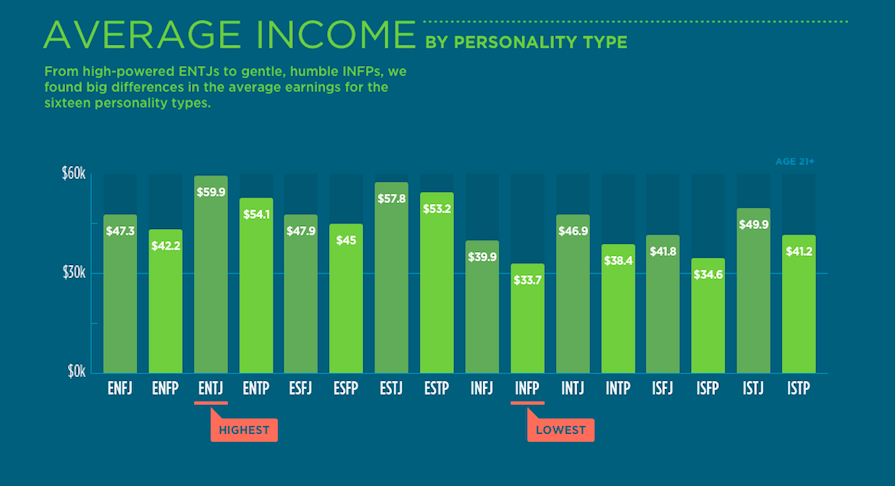
Let’s consider personality types and how you might react at work. Let’s pretend that you’ve just finished giving a big presentation at work. You’ve poured a lot of time, effort, and heart into this presentation. After you’ve delivered it, an outspoken coworker challenges your ideas. How do you react?
- A. Engage the coworker in a friendly debate about the merits of both your argument and theirs.
- B. Avoid the conflict altogether by agreeing or changing the subject?
It might not seem like a big deal at first glance, but how you approach these types of situations can actually have a direct impact on how much you earn. And how you approach these situations will largely depend on your Myers-Briggs personality.
Avoiding the conflict by agreeing or changing the subject might seem like a good way to avoid unnecessary confrontation, but it can put out the wrong impression to your both your boss and coworkers. You may look like a “pushover” or perhaps they’ll assume that you don’t have enough evidence to support your claims. If you take charge and lead a friendly debate, it shows that you have a solid foundation for your argument.
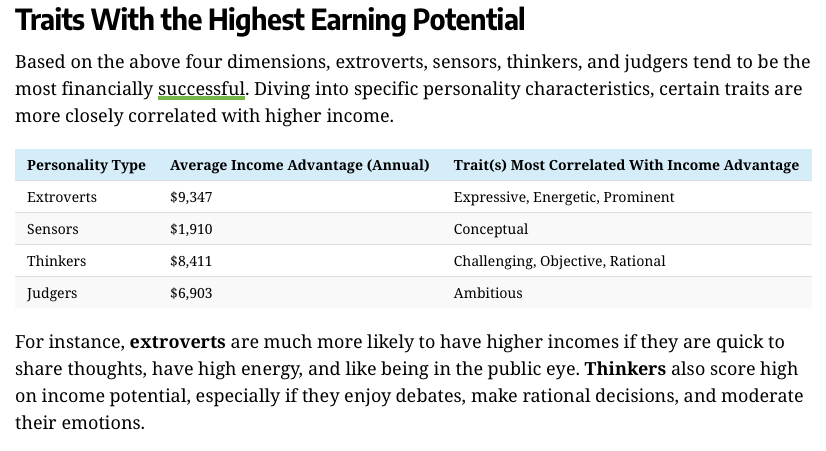
Looking at the personality types, you can also start to see patterns/weaknesses. Judging personality types are rigid and unwilling to move for the most part. They like and crave structure. If something comes along that challenges that, they might dig their heels in. And if you’re digging your heels in with a customer or boss, things probably won’t sway in your favor.
However, if this trait is paired with others (such as the ENFJ personality), then you’ve got one of the top earners. The judging personality type suddenly begins a benefit rather than a hindrance.
Your Myers-Briggs Personality type can also affect your earnings over time.

So for example if you’re an ENTP in your twenties, don’t be discouraged if your income isn’t where you want it to be. This personality type sees a big boost in its thirties and forties.
Average Income based on Personality
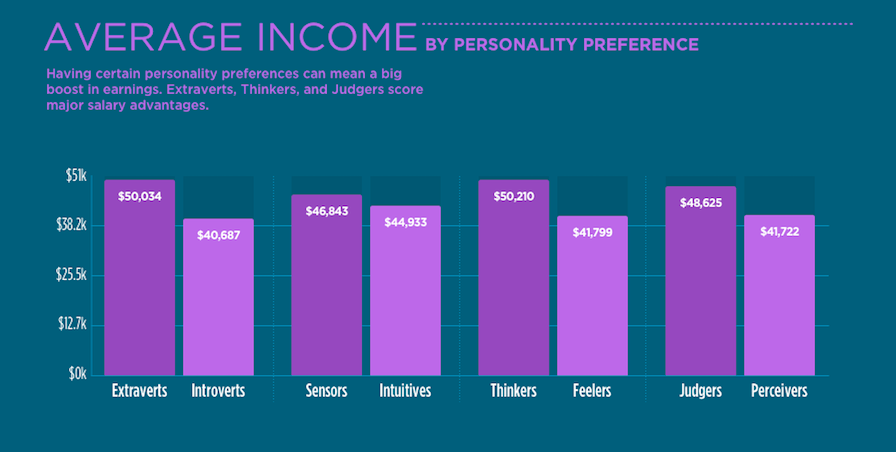
As you can see, Extraverts, Thinkers, and Judges score quite a bit higher than their counterparts. Sensors and Intuitives are pretty equal with Sensors pulling ahead just slightly in income.
Desirable Personality Facets

Besides your Myers-Briggs Personality type, there are other facets of your personality that are equally important to your income.
- Ambitious- Ambition is an obvious one. You won’t achieve much if you don’t have drive.
- Challenging- Not everyone wants a “yes man” in their business. Challenging ideas and coming up with new approaches will get you far. Not running from conflict also looks good on paper.
- Expressive- Those that are quick to speak, share their thoughts, and opinions will do good in a leadership position. You’ll also do well under someone and be able to climb the ladder to success quickly.
- Objective- Making rational decisions as opposed to ones based on emotions is another important personality facet to have.
- Energetic- Keeping busy and having a high energy will get you places
- Conceptual– You’re interested in understanding the bigger picture.
- Prominent– Valuing social status and taking care of your online presence can correlate to higher income.
Maximizing Your Potential
With the information at hand, you might be worried that if you’re an introvert that you are doomed to the world of lower salaries. Well, this isn’t the case. Personality does play an important role, many other factors contribute to income:
- Level of education
- Years of experience
- Local job market
- Type of industry
- The particular career
“Not only that, anyone can work on the two specific personality traits most aligned with higher incomes: set ambitious goals, and face conflict head-on to ensure your voice is heard.“
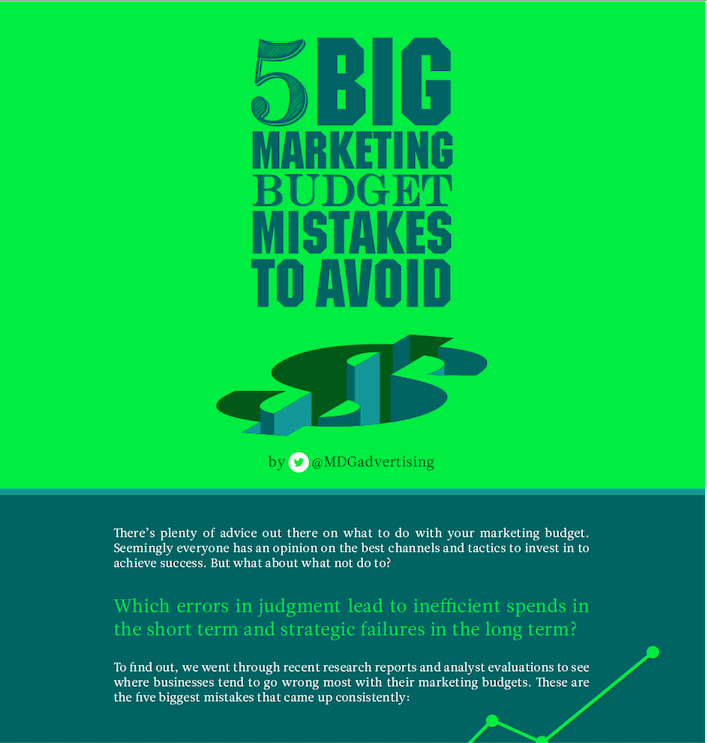
Chances are, you’ve already set aside or thought up a budget for your marketing expenses. Common sense right? You don’t want to blow all of your money on one aspect of your business.
Unfortunately, this area of business almost always gets underfunded. And as Jeff Desjardins points out, “as a result it ultimately ends up being a numbers game: did the marketing team generate sufficient ROI with the restricted amount of money they had? And if you could re-allocate those resources in a particular way, could they have gotten the company more bang for the buck?”
Even if you don’t have a marketing team and you’re doing this by hand, it’s important to make sure that you have enough money set aside for marketing purposes.
Maximizing a budget for ROI
Setting aside a budget for ROI (Return On Investment) seems pretty obvious and straightforward. You want to spend enough to get attention and clients, but you don’t want to overspend. It’s a tricky balance, but as I mentioned it seems like a pretty simple thing to figure out.
Unfortunately, ROI is definitely a subjective term in the marketing world. Desjardins notes that “no one agrees what it means, how to measure it, how to develop a strategic plan around it, or what tactics to use.” Yikes. So how do you know how much to spend if nobody can agree what works the best? How do you maximize your ROI if people can’t even come to a basic agreement of what the term even means?
Not surprisingly, this is where a lot of marketing mistakes take place. This ambiguous kind of gray area becomes a pitfall. So how do you avoid it?
Well, let’s a take a look at the MDG Advertising infographic. It looks deep into the world of marketing budgeting and focuses on some of the most common mistakes.
#1 Beginning with Bad Data
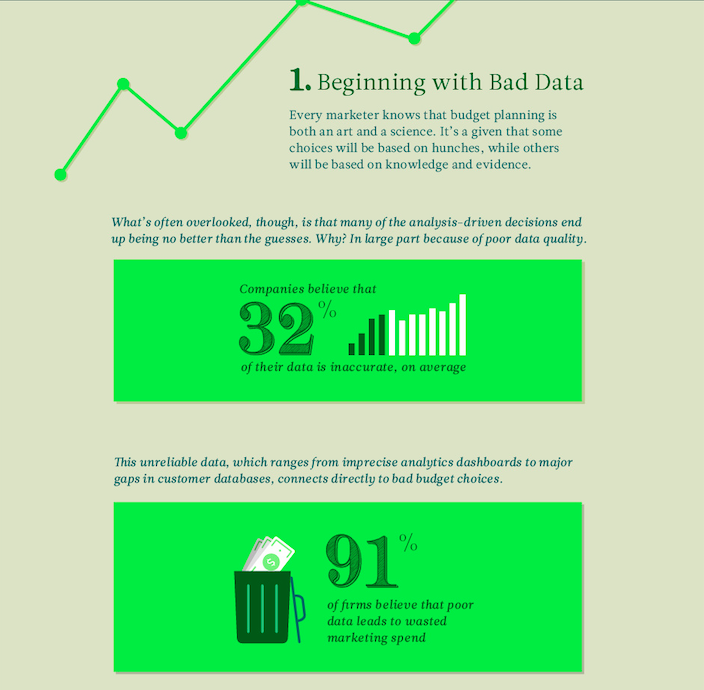
Budget planning is one of those fickle things that requires a lot of intuition. Most of what you do will be based on that “gut feeling” as well as what worked previously.
*Though each project is different; what worked great for one might flop for the other.
So in short, a lot of your analysis planning becomes guesswork. Not necessarily the worst thing in the world, but definitely not the greatest asset for your business either. But what’s to really blame here? Well, many suggest that it’s actually bad data quality that’s to blame.
Companies believe that 32% of their data is inaccurate on average.
That’s a staggering chunk of data that isn’t reliable. What makes up this data? It ranges from:
- Analytics dashboards that are fudging numbers/not reporting accurately.
- Significant gaps in customer databases.
Thus, you’re led down a path that delivers you directly to poor budgeting choices’ door. Unsurprisingly, 91% of firms believe that this poor data leads to wasted market spending.
And it makes sense. If you’re working with bad data and spending based on it, then you’re probably wasting a lot of dollars.

So what can you do exactly to combat this? Well, unfortunately in a lot of ways it’s going to be trial and error. But to maximize your chances of avoiding the pitfalls, check and double check your data. Reach out to others in the field who are successful. Check blogs for advice. Take advantage of Facebook groups. And at the end of the day, trust your gut instinct.
#2 Failing to Coordinate with Sales

Your success is ultimately dependent upon your marketing campaign. If you have a weak or lackluster marketing campaign, your business (and your bank account) are going to pay the price. No matter how much engagement you achieve or your social media presence will matter if there’s not some direct impact on revenue. In short, you can have 40k Instagram followers who like/comment on all of your posts but it doesn’t really matter unless they’re spending or getting others to spend.
Assuming you’ve got a sales department to handle this, keep in mind that 50% of sales people are unhappy with their firm’s marketing habits.
This usually occurs because there’s a disconnect between the marketing and sales departments. These two should be intimately linked and working close together. If they’re not, as the South Park meme goes:

If you’re managing both sides on your own, you’re far less likely to have this disconnect but it can still occur. You need to pay attention to all aspects of your business and invest in each part fairly. If you’re focused too much on your sales, then your marketing is going to slip… And ultimately, your sales will follow. The opposite is true as well.

#3 Underinvesting in Workhorses that have Proven Their Worth
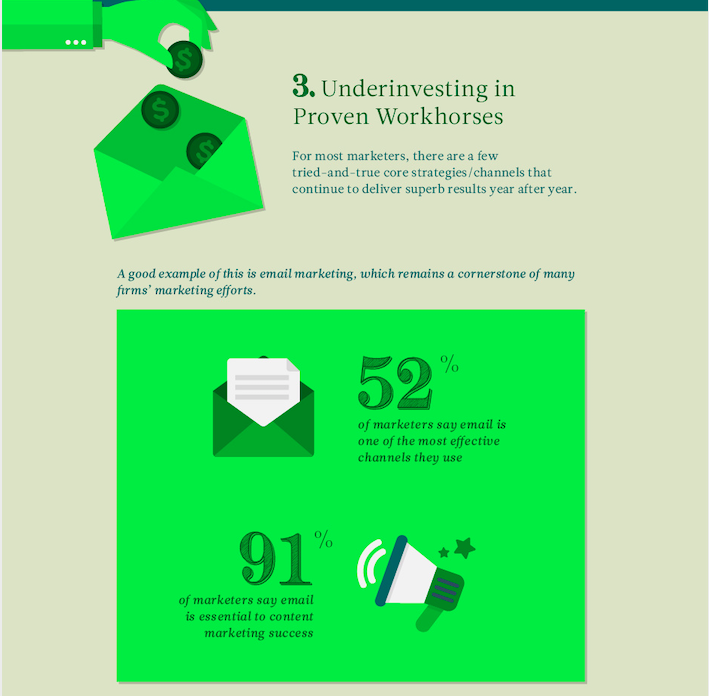
Almost every marketer out there has their “bread and butter”. What I’m referring to is tried and true strategies, channels, platforms, etc. that have continued to deliver superb results year after year. For some marketers, LinkedIn is the way to go. Every time they visit the platform regardless of what the business is about, they get results. It’s proven its worth time and time again.
Many swear by email marketing. In fact, 52% of marketers say email is one of the most effective channels they use.
91% of marketers say email is essential to content marketing success.
So where’s the issue?
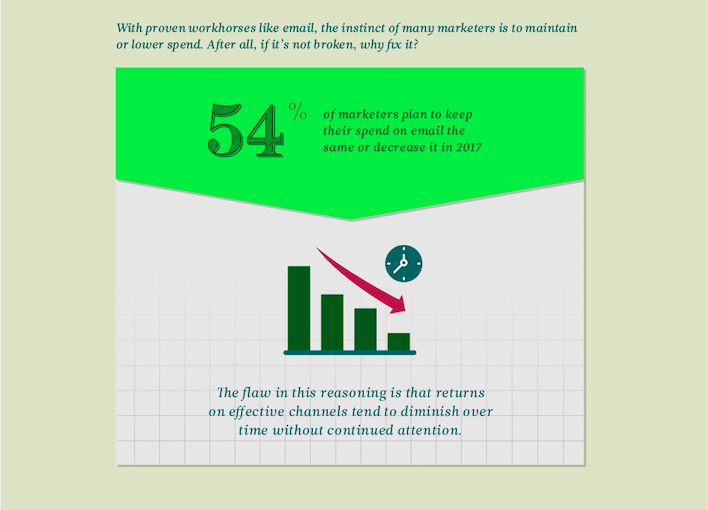
When looking at proven workhorses, many marketers maintain or even lower their spending on these platforms/strats. After all, if it’s working so great on its own, why change that? If it’s not broke, don’t fix it.
Well, this is one of those rare areas where that quote doesn’t pay off (literally). “Returns on effective channels tend to diminish over time without continued attention.” Just like a work horse in real life, it’s not going to be in the best shape possible or be able to work properly if it’s not being cared for and groomed. Think of your platforms the same way. If they’re performing for you, give them the attention they deserve. Keep grooming them.

#4 Underestimating the Speed of Change
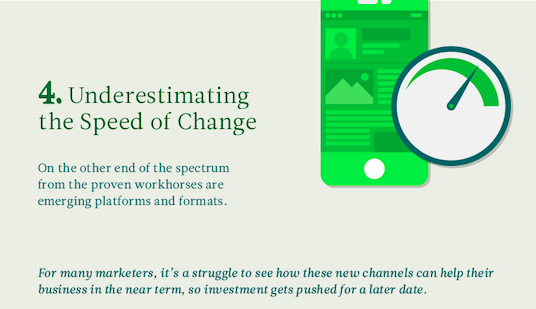
This is also where things get tricky. While you definitely want to pay attention to your proven workhorses, you don’t want to neglect new avenues and platforms. Technology is always changing! New and exciting things are released each and every day it seems. And while it can be tempting to just keep grooming your workhorse, it’s also important to explore these other avenues. Keep in mind that at some point, your workhorse might be replaced by one of these new platforms and if you haven’t invested at least a bit of time into it, you’re going to be left behind.
This isn’t to say that you should neglect those that are paying your bills, but make sure you’re expanding your horizons and trying new things too!
“For many marketers, it’s a struggle to see how these new channels can help their business in the near term, so investment gets pushed for a later date.”

The infographic above is pretty self- explanatory as to why you shouldn’t push off new platforms in favor of spending time with your workhorses.
But once again, things shift and when they do they shift fast. So make sure that you’re also leaving some wiggle room to explore new avenues. You never know what’s going to be the “next big thing” and you want to make sure you’re on board when/if it hits.

There are also a number of fresh technologies that could see rapid increases in the coming years:
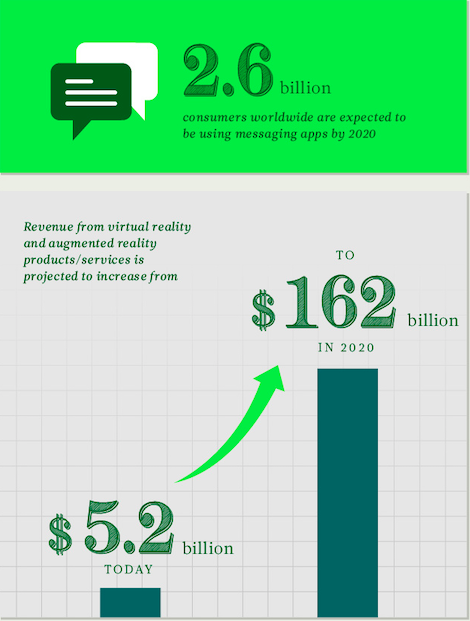
#5 Evaluating Too Little, Too Infrequently

But how can you tell exactly if your marketing budget is delivering as expected?
This is where one of the biggest pitfalls in marketing budgeting lies: evaluating too little, too infrequently.
For a lot of businesses, they have X amount of clients or X amount of money in mind that they want to make. If they’re reaching those goals or coming close, they’re typically content to assume that their marketing budget is paying off. And for the most part, they’re right. After all, they’re reaching their goals so it must be working.
However, your marketing budget could almost always perform better.

So don’t sit back so content with your results that you neglect evaluating your business. Or that you push it off. “I’m getting results, why check?” Honestly, you should be checking pretty compulsively.
Where to start?
The foundation. It’s great that you developed a budget but it’s not enough. You and your business won’t benefit from you sitting back and coasting. You need to regularly evaluate and check your strategies. Are they performing to the best of their ability? Can you do more? Are certain areas tanking that were performing well?
“Evaluation however doesn’t just apply to strategy. To make the most of your marketing spend, you need to monitor and test execution. Unfortunately, many businesses fail to do this.”

With all of this in mind, it’s important to spend some time checking and re-checking your marketing strategy. Yes, it costs money and yes it takes time away from you, but honestly the pay off is well worth giving up a few hours of your time or spending that extra cash. Your business will benefit from the attention and investments you make. So don’t neglect it!

Thanks to Jeff Desjardins at https://www.visualcapitalist.com for the graphics and info!
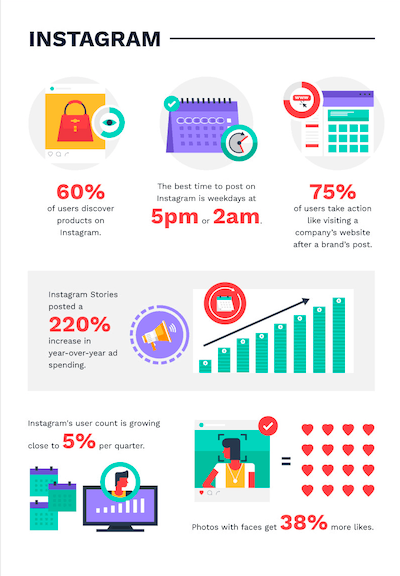
Now it’s time to cover the social media giant known as Instagram.
When people think of Instagram, a lot of times they think of people sharing their favorite moments with an online audience. After all, the platform caters to video and photos; no such thing as links and text is pretty “limited”. When I say limited, I don’t necessarily mean a character limit as you can cram a LOT of hashtags and keywords into your description. What I do mean, is that the text is heavily downplayed by the images you’re uploading.
So with this in mind, is Instagram really that viable for marketing your services/products?
Hell yeah it is!
60% of users discover products on Instagram
A lot of online businesses have made their sales by having a huge presence on Instagram and focusing all their time on this one platform. Everything from shaving companies to female clothing lines to slime shops to photographers and more have all cut their teeth here. And for good reason.
As you can see by the stats, 60% of users discover products on Instagram. That’s a BIG number! Instagram makes it easy to connect with potential clients and buyers and you can also pay to boost your ads. And if you choose to do so, I can guarantee you will get views. Insta is great at pumping your paid content out.
The best time to post on Instagram is weekdays at 5pm or 2am
I’m going to be honest here… These seem like pretty wonky time slots. 5pm is pretty normal as people are getting off work so they’re checking their social media accounts, but 2 am? That just seems odd to me. However, it really is a good time slot for posting. You’ll catch quite a bit of activity around this time.
75% of users take action like visiting a company’s website after a brand’s post
This is the great thing about Instagram: if your post is seen, 75% of those will visit your company’s website afterwards. That’s HUGE!
This is also one of the pitfalls of Instagram. Your content needs to be catchy, attractive, and top quality to draw in attention. You really need to pump out something stellar! It’s not like Facebook where you can get away with an ad and a photo of your product/services…. You need to be creative! However if you can make it visually attractive, then you’re golden.
Instagram stories posted a 220% increase in year-over-year spending
Your Instagram stories are going to be important to your sales as well. Instagram stories let your audience catch up with you, see what you’re offering, and what your company is up to. It’s an informal but catchy way of marketing to your audience. Plus, your products may get buried in your client’s timeline. Especially if they follow a lot of people and businesses. Instagram stories are your way of “hacking the system” so to speak. Your story will show up at the top of everyone’s (that follows you) newsfeed. And even if they skip over your story to check others, chances are your story will play automatically while they’re scoping out what their friends are up to.
And those that are taking advantage of Insta stories will see more sales. People tend to forget about products and businesses unfortunately until a problem arises or they need something. Seeing your stories will remind them that hey, you exist! And that they should be using your stuff.
Instagram’s user count is growing close to 5% per quarter
That’s quite a bit of fresh blood to advertise to! And as an added bonus, Instagram doesn’t expect these numbers to dwindle off.
Photos with faces get 38% more likes
While Instagram makes it easy to market to your audience and attract new clients, you do have to “learn the system” so to speak. Photos with faces are going to get more attention than pictures of just your products. This is why you see a lot of people that advertise on Instagram videos feature models or even themselves alongside their products.
So if you can work your face or someone else’s into your product posts, you’re going to get a lot more attention.
As always, thanks to Jeff Desjardins for the graphic!

Continuing on with our mini series, let’s dive into Twitter!
Blog Posts longer than 1,500 words receive 68.1% more tweets!
Are you catching a theme here? 🙂 Longer blog posts are your money makers! This isn’t to say that short blog posts aren’t viable (a lot of our posts are short), but if you’re looking to take advantage of of social media, then you’ll want to pump out some lengthy posts.
88% of businesses with more than 100 employees use Twitter for marketing purposes
Twitter is almost a requirement for ANY business; especially online ones. Most social media platforms can get bogged down with, well, social media. And not necessarily the advertising or connecting kind. Facebook has become a well for sharing memes, Instagram won’t allow links (unless they’re paid) and you’re confined to images. Tumblr is hit and miss. This isn’t to say that they aren’t viable, because they are, but Twitter is your bread and butter.
The social media platform is practically set up for small businesses. You can utilize hashtags, connect with others, network, link out to various sources, implement images, and text.
Twitter has nearly 4 times as many users internationally as in the US
Twitter has a HUGE outreach. And despite your location, it’s pretty easy to connect with anyone anywhere. Facebook, for example, can be pretty limiting. Typically your advertisements are only going to be marketed to those in the same country or who speak the same language. While this is true of Twitter, it’s easier to connect with those outside of your area.
Tweets with video get 6 times as many retweets as tweets with photos
Typically, photos are your money makers. And while this is still true of Twitter, videos are the sweet spot when it comes to engagements and retweets… And chances are, you already have a YouTube channel so why not double your exposure and link to your vids on Twitter? 🙂
Thanks to Jeff Desjardins for the graphics!

I think it’s time to talk about using social media platforms to their fullest potential. I’ll break this down into sections regarding a few of the top ones. They’ll be published over the course of next week. 🙂 Today, we’ll cover Facebook.
Let’s dive in!
Blog Posts longer than 1,500 words get 22.6% more likes!
That’s quite a bit of attention! For the most part, people tend to think that longer posts aren’t as attractive as shorter ones that are more “to the point.” After all, we’re familiar with that acronym TL;DR (too long didn’t read). Well, this isn’t necessarily true. There are still those that are after the instant gratification posts, but you can accommodate them while also appealing to this audience that likes authority pieces. Get to the point as I did on the header of this, but offer further reading.
However, if you are trying to sell a product or convince a client to pick you over your competitors, longer pieces are going to be a good selling point for you. They allow your audience an opportunity to really get to know you and they also show them that you know what you’re talking about.
Images account for 75-90% of Facebook advertising effectiveness!
Arguably, this one should be pretty obvious. If you’re advertising on Facebook, images are going to attract more attention than just text. Obviously this applies to buying ad space on Facebook, but it also helps your personal/business posts attract attention. People are more likely to stop for at least a moment if you have an attractive or interesting image. And sometimes that moment is all you need to get their attention (and business).
Your images do need text though. You can’t just throw an image up and expect people to know what you’re selling. Text on the image takes care of this, but it’s distracting. You want to let your product shine through on its own. So limit your ad title to 4 words and the description to 15. These have the highest rates of success.
The best time to post on Facebook is weekdays between 1pm and 3pm
Even though people check their Facebook pretty regularly, they don’t spend much time on it during business hours. So if you’re looking to make a dedicated post at a certain time, schedule it to go live between these times. While location will affect this, you’ll still manage to catch a large portion of people during their lunch break… Or what I like to call “my shovel food into my mouth while I check social media” break.
There are also other good times to post as well: 5pm-7pm on weekdays, and anywhere between 9am to 12pm on weekends can be a hot spot as well.
74% of people say they use Facebook for professional purposes
Facebook used to be a place to share what was on your mind, pictures of your food and memes. While it still caters to that, it’s also become a great resource for business owners. Facebook allows you to connect intimately with your clients, keep them up to date with what’s going on with your company, and the latest updates. After all, not everyone is going to check your website (or emails) daily or even weekly. But you know what they are checking daily? Facebook.
Thank you to Jeff Desjardins for the statistics! <3

You’re more than likely familiar with all of this, but what you might not be aware of is the statistics behind it. Take a look at the graphic above. We all know it’s important to rank on Google and we also now quality content is Gucci. But did you realize just how important it is? 75% of people don’t go past the first page of Google’s results. This means that if you’re on the second page or further, a big chunk of potential clients aren’t going to see you.









